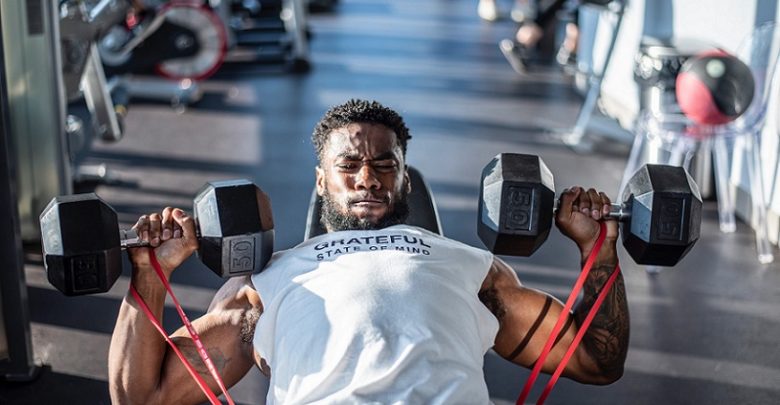
In the realm of fitness, the conundrum of whether to perform cardio before or after strength training has been a long-standing one. Some exercise enthusiasts swiftly engage in cardio to get it out of the way, while others prioritize strength training when their energy levels are at their peak. So, how does one decide the order of their workout routine?
Deciding the Order of Cardio and Strength Training
Based on common fitness objectives, here’s how to determine whether to do cardio before or after weights:
- Pursuing endurance? Perform cardio before weights.
- Aiming for fat loss and weight reduction? Opt for cardio after weights.
- Wanting to gain strength? Do cardio after weights.
- On days of upper-body strength training, you can do either first.
- On lower-body strength training days, perform cardio after weights.
- If general fitness is your goal, start with the one you like less.
Now that we’ve covered the basic tips, let’s explore the details about combining cardio and weight training for maximum benefits.
Frequency of Cardio and Weight Training
“The U.S. Department of Health and Human Services recommends adults to have at least 150 minutes of moderate-intensity cardio or 75 minutes of vigorous-intensity cardio per week, and strength training at least twice a week.” However, the distribution depends on individual goals and schedule.
Personally I’d recommend you add in an additional day of strength training, as twice a week just isn’t going to really get you to your goals very quickly. However, weight training thrice a week is a very efficient strategy for building up that muscle mass and burning off body fat. For cardio, depending on your energy levels low-intensity exercises can be done daily. The higher intensity exercises should be viewed with caution, especially if you’re just starting out, and you should give yourself plenty of rest afterwards to encourage muscle repair and growth.
To give you an idea, your weekly schedule might look like this:
- Weight training: 2-4 times per week
- Low-intensity cardio: 5-7 times per week
- Moderate-intensity cardio: 3-4 times per week
- High-intensity cardio: 1-3 times per week
The duration of your cardio sessions also depends on your fitness goals. For instance, if you aim for strength improvements, your cardio should be limited to 10-15-minute warm-up sessions. However, if your goal revolves around overall fitness and health, there is no real limit, barring physical and schedule limitations.
Can Cardio and Weights Be Done on the Same Day?
Traditional workout guidance suggests alternating workouts—cardio one day, followed by weight training the next, or vice versa. However there’s no reason why both can’t be done in the same workout session, or be split into two sessions on the same day.
High-intensity workouts which combine strength and cardiovascular training, deliver results in less time without any negative physiological effects, according to a study published in The Journal of Strength and Conditioning Research.
If you decide to do two separate workout sessions in a day, we would advise you to leave an eight-hour recovery period between high-intensity cardio and lifting weights. This is because the body does not physiologically adapt (i.e., get stronger, faster, develop more endurance) until after a workout, so continuously stressing it with exercise may hinder your progress.
Combining Cardio and Weight Training Based on Fitness Goals
For Strength…Do Cardio After Weight Training
The logic behind this is simple. Lifting heavy weights requires a lot of physical and mental energy. Therefore, it’s essential to focus on lifting properly to avoid injuries.
“The best type of cardio to pair with weight training is low-intensity cardio.”
This opinion is supported by science too. Research shows that when participants ran or cycled before strength training, they could perform fewer reps compared to those who only strength-trained. Another study found that muscle power decreased when lifting weights after running on a treadmill, while the heart rate and the rate of perceived exertion increased significantly.
For Weight Loss…Do Cardio After Weights
A study published in Medicine & Science in Sports & Exercise found that doing cardio after weight training burns more fat during the first 15 minutes of the cardio workout than starting with cardio and then lifting.
Also, resistance training was found more likely to reduce a type of heart fat linked to cardiovascular disease, as compared to aerobic exercise, according to a 2019 JAMA Cardiology study.
Key term: EPOC, or excess post-exercise oxygen consumption, refers to the calories your body burns to help you recover from your workout. Anaerobic workouts, which use fast-twitch muscles, are better at stimulating EPOC.
To Improve Cardiovascular Endurance…Do Cardio Before Weights
If you’re training for a race, doing weights before cardio could decrease your endurance. A study published in the journal Applied Physiology Nutrition and Metabolism found that participants showed greater running impairment when they performed strength training prior to running, compared to the group that ran first.
So weights before cardio or cardio before weights? The bottom line.
Both strength training and cardio should be part of your workout routine, and you can do them both in a single session. Your fitness goals will help you decide whether to do cardio before or after weights, and as long as you follow the advice in this article you should be hitting your goals in no time with little risk of injury. Always listen to your body if you’re going to hard and experiencing pain make sure to stop and rest, and if you can then we recommend highly that you get a personal trainer involved who can help to educate you on the best practices for whatever goals you may have.






